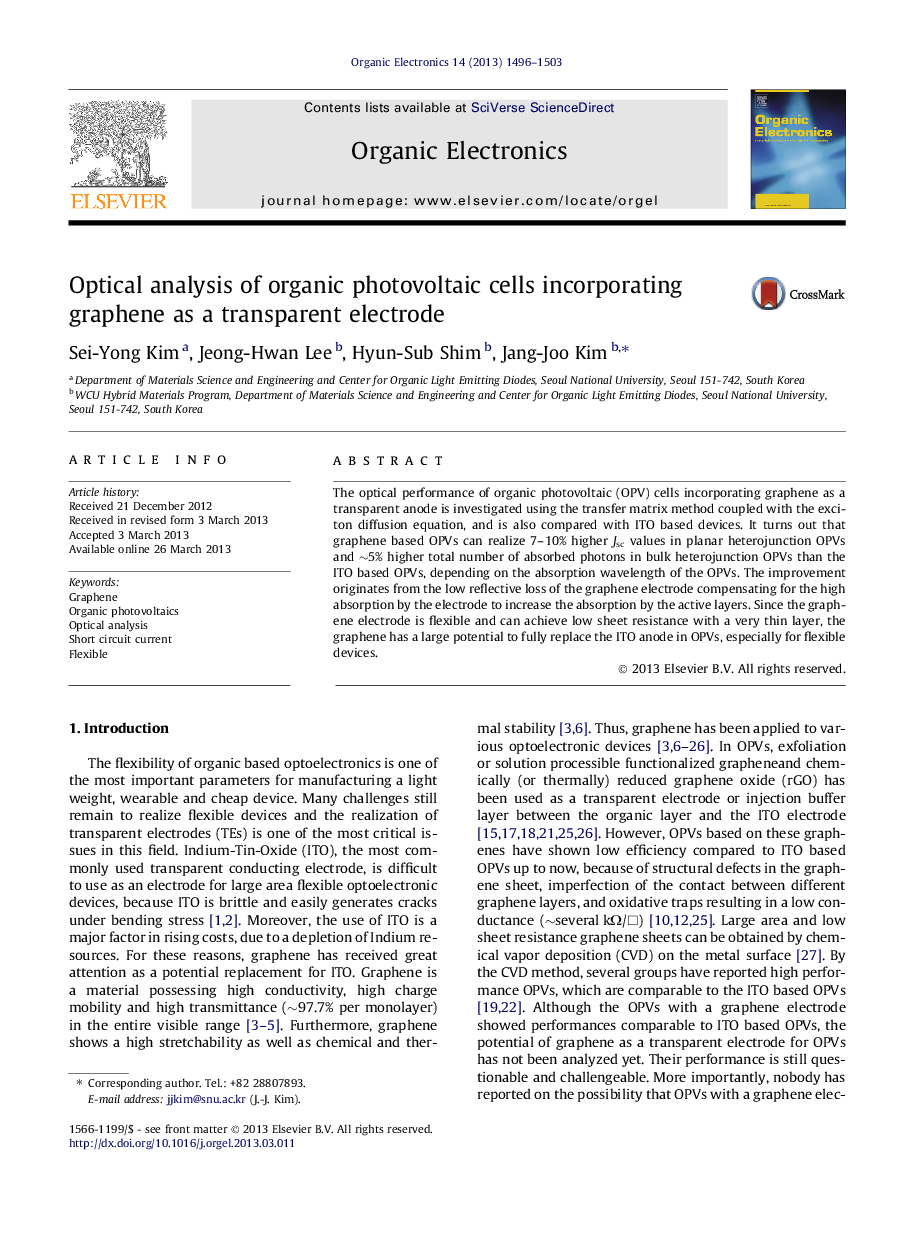| Article ID | Journal | Published Year | Pages | File Type |
|---|---|---|---|---|
| 1264509 | Organic Electronics | 2013 | 8 Pages |
Graphical abstractFigure optionsDownload full-size imageDownload as PowerPoint slideHighlights•The optical performance of OPVs incorporating graphene as a transparent anode is investigated.•Graphene based OPVs can realized 7–10% higher Jsc in planar heterojunction OPVs than ITO based device.•Bulk heterojunction OPVs showed much higher photon absorption up to 5% than ITO device.•Improvement of Jsc originates from the low reflective loss of graphene electrode.
The optical performance of organic photovoltaic (OPV) cells incorporating graphene as a transparent anode is investigated using the transfer matrix method coupled with the exciton diffusion equation, and is also compared with ITO based devices. It turns out that graphene based OPVs can realize 7–10% higher Jsc values in planar heterojunction OPVs and ∼5% higher total number of absorbed photons in bulk heterojunction OPVs than the ITO based OPVs, depending on the absorption wavelength of the OPVs. The improvement originates from the low reflective loss of the graphene electrode compensating for the high absorption by the electrode to increase the absorption by the active layers. Since the graphene electrode is flexible and can achieve low sheet resistance with a very thin layer, the graphene has a large potential to fully replace the ITO anode in OPVs, especially for flexible devices.
